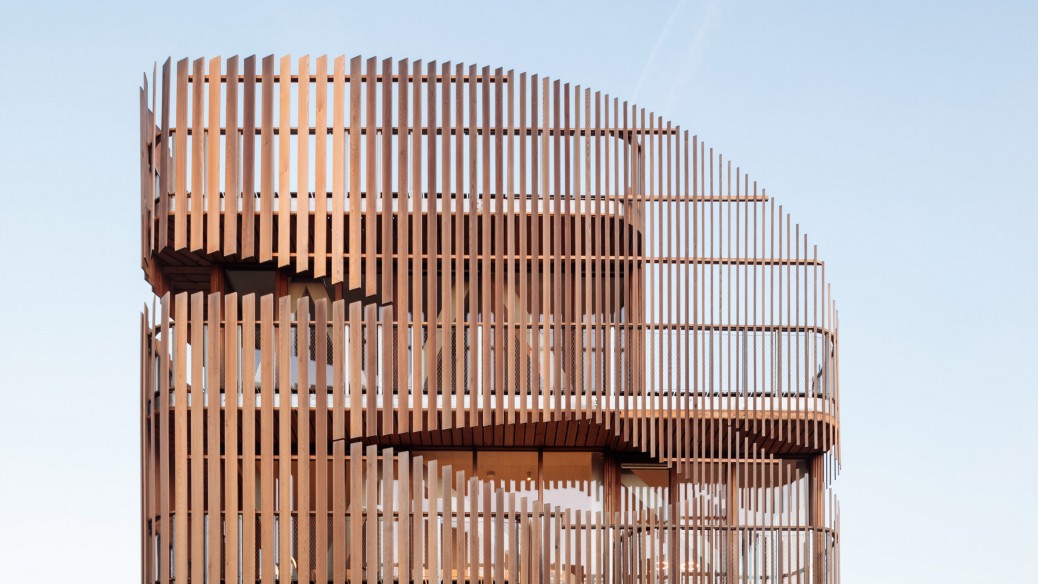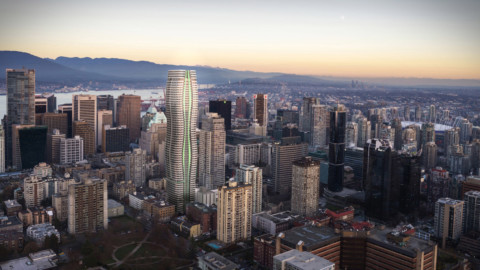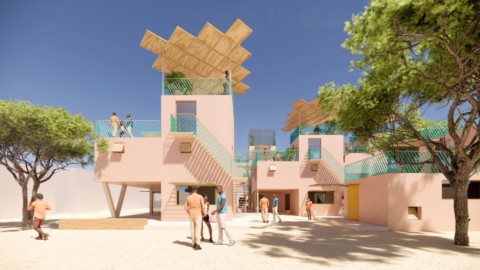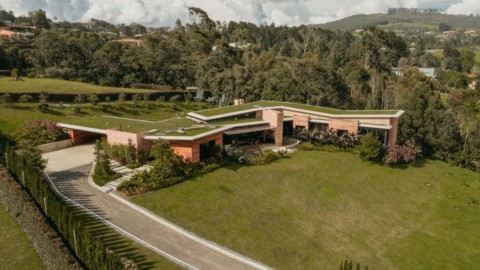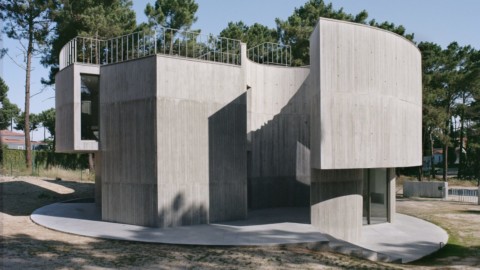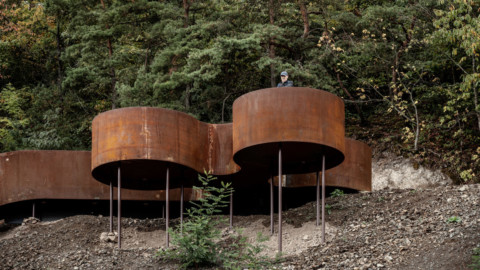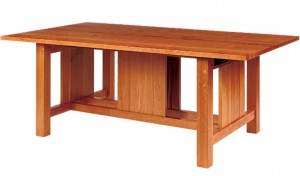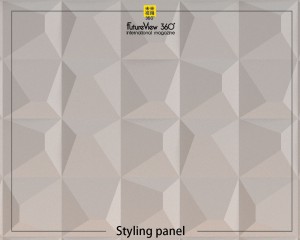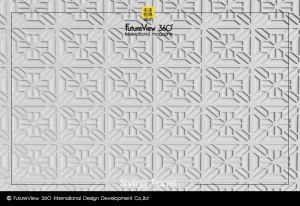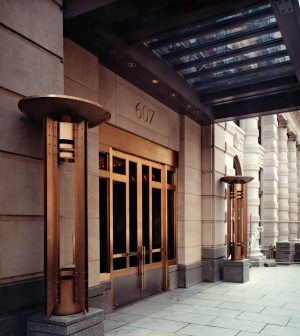Dutch architecture studio GG-loop has built a pair of prefabricated apartments in Amsterdam with timber louvres positioned to regulate the levels of light entering the building.
Called Freebooter, the block was made from steel and cross-laminated-timber (CLT) and was prefabricated off site. It took three weeks to install all four floors, and the whole project took only six months to build.
荷蘭建築工作室GG-loop在阿姆斯特丹建造了一對預製公寓,木質百葉窗可以調節進入建築物的光線水平。
該塊被稱為Freebooter,由鋼和交叉層壓木材(CLT)製成,並在現場預製。 安裝所有四個樓層花了三個星期,整個項目只需要六個月的時間。
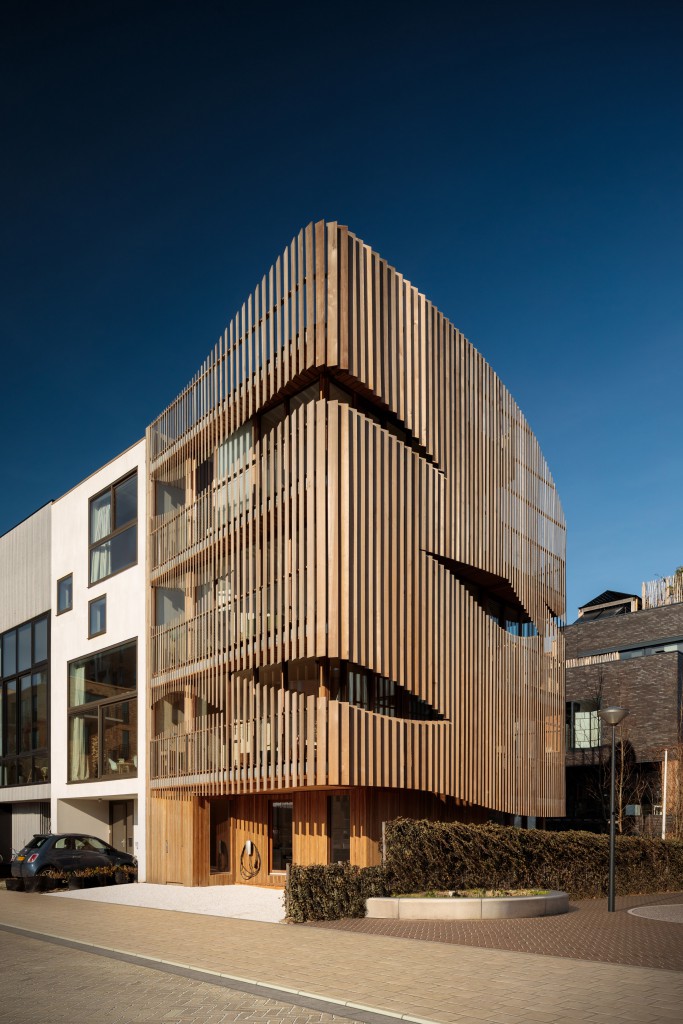
The building, which contains two duplexes, is wrapped in long vertical planks of timber.
These timber strips extend over some the building’s terraces, with cut aways placed to allow light into the building.
該建築包含兩個雙層建築,包裹在長長的垂直木板中。
這些木條延伸到建築物的一些露台上,並留有切口以允許光線進入建築物。
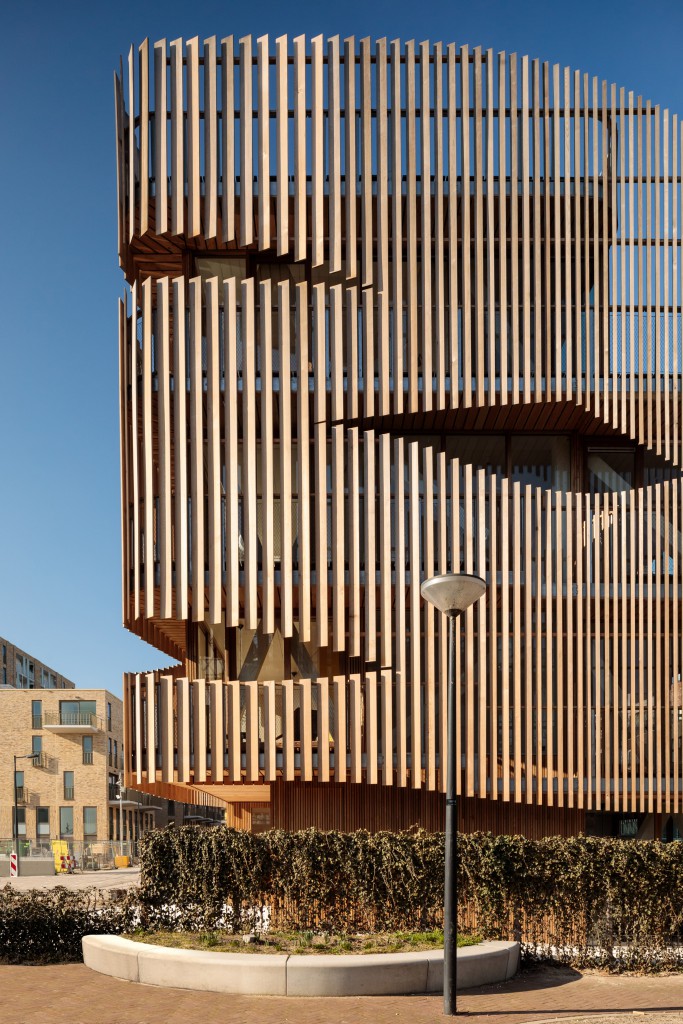
The building was created using Biophilic design principals, which place emphasis on connecting architecture with the natural world in order to improve the lives of the people who use the buildings.
Freebooter’s shape and the angle of its timber louvres were positioned according to analysis of the movement of the sun over the course of the year.
This means the natural, wood-lined interiors always receive a good level of natural light all year round.
該建築是使用Biophilic設計原則創建的,其重點在於將建築與自然世界聯繫起來,以改善使用建築物的人們的生活。
Freebooter的形狀和木材百葉窗的角度根據太陽在一年中的運動分析而定位。
這意味著自然的木質內飾室內全年都能獲得良好的自然光線。
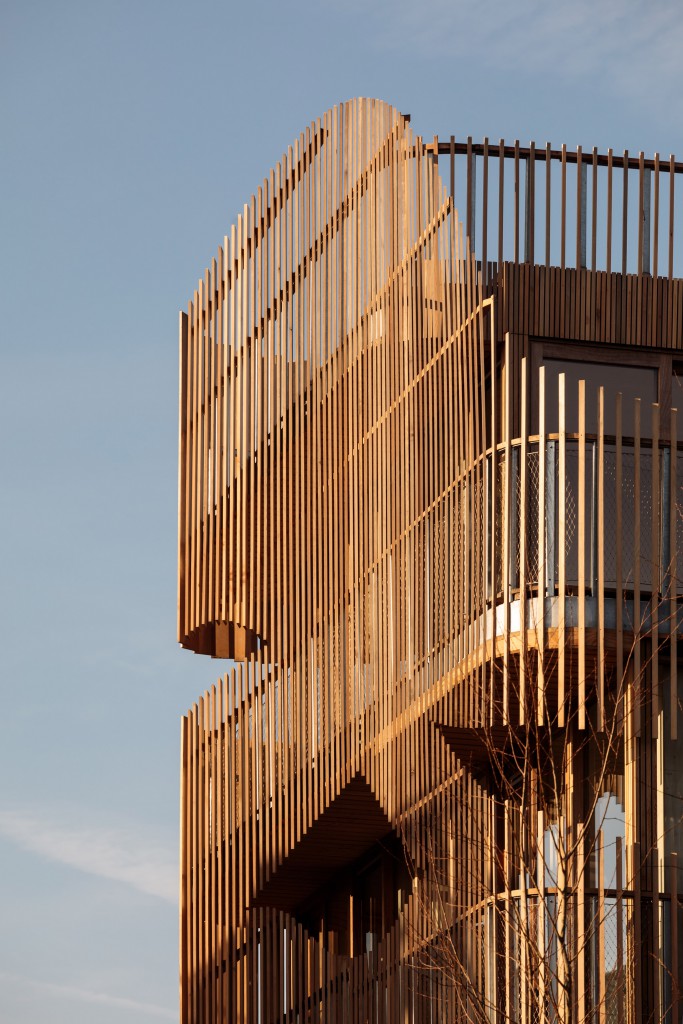
“We are part of nature in a deep and fundamental way, but in our modern lives we’ve lost that connection,” said Giacomo Garziano, architect and founder of GG-loop.
“Freebooter is a response to that; as I see biophilic design as the key to truly innovative design, balancing the technical aspects of environmentally conscious construction with the qualitative, lived-in experience of an organic and natural space.”
GG-loop的建築師兼創始人賈科莫·加齊亞諾說:“我們是深刻而根本的自然的一部分,但在現代生活中,我們已經失去了這種聯繫。”
“Freebooter就是對此的回應;因為我認為自然設計是真正創新設計的關鍵,將環保建築的技術方面與有機和自然空間的定性,生活體驗相平衡。”
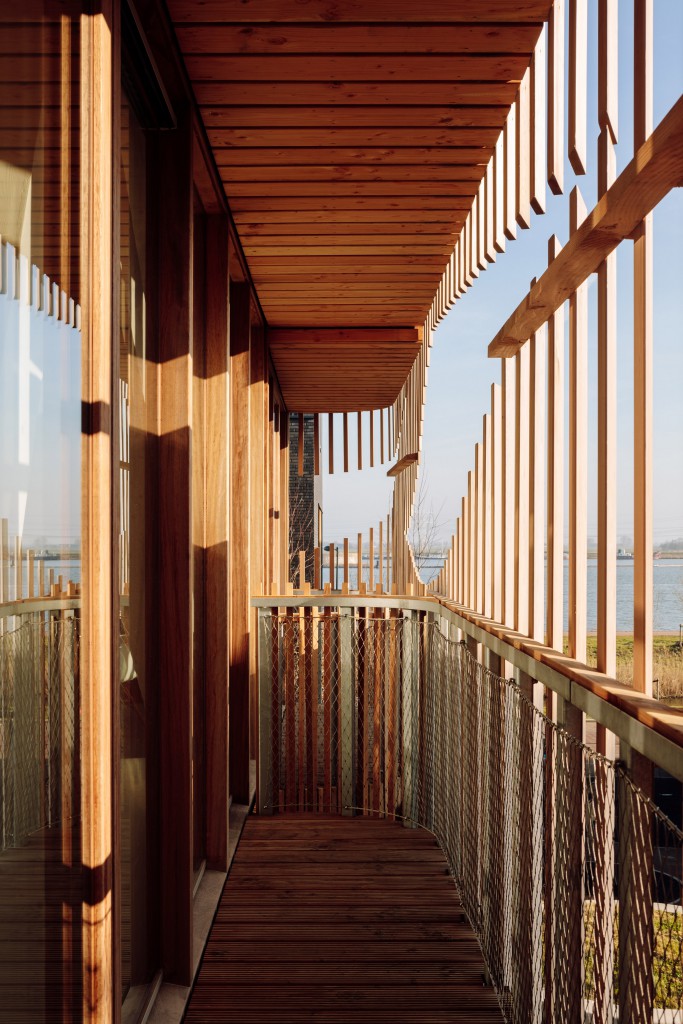
The double facade also gives residents privacy despite the floor-to-ceiling glazing.
Each apartment occupies two levels. On the ground floor of the first duplex there’s an open plan living area with space for sitting and dining, an enclosed kitchen at the front and a garden at the back. Upstairs a study and two bedrooms wrap around a shared bathroom.
儘管採用了落地玻璃,雙層立面也為居民提供了隱私。
每間公寓分為兩層。 在第一間複式公寓的一樓,有一個開放式起居區,可供坐和用餐的空間,前面的封閉式廚房和後面的花園。 樓上設有一間書房和兩間臥室,環繞著共用浴室。
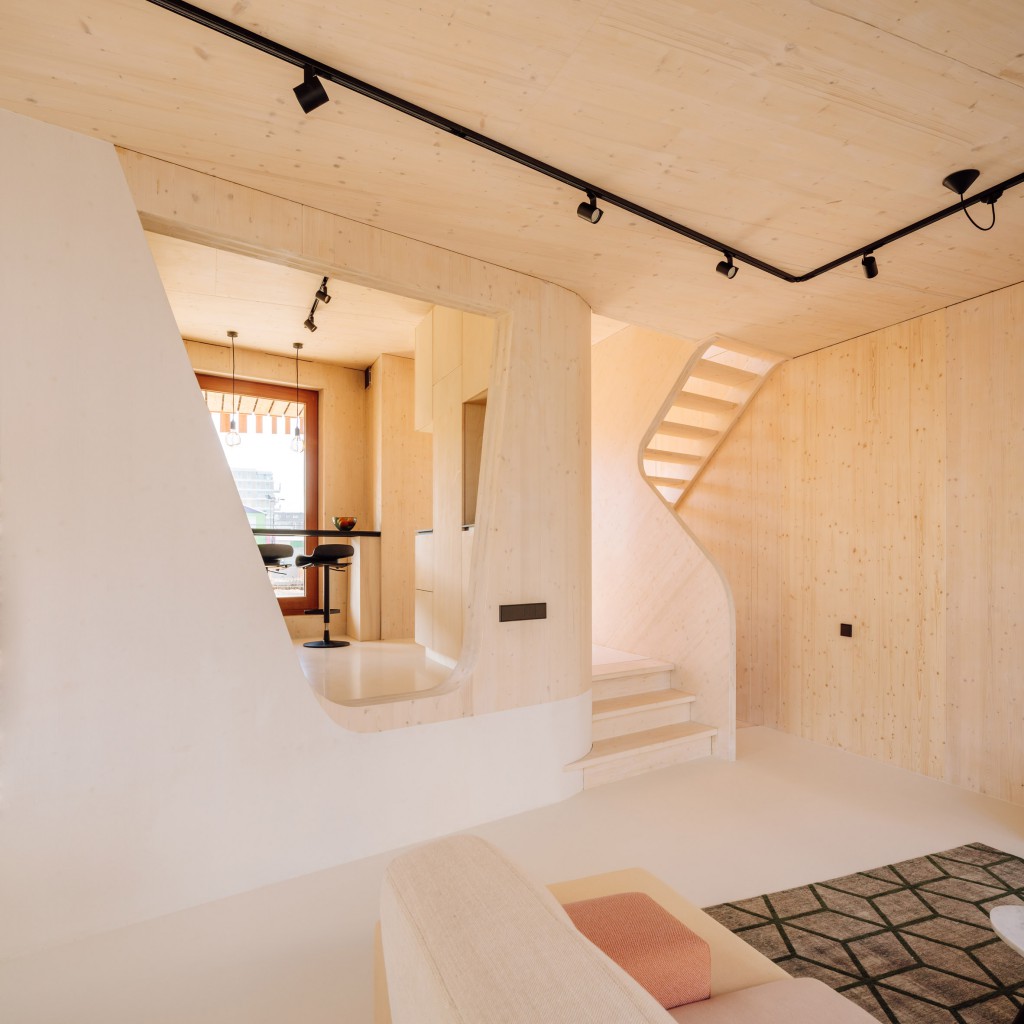
In the upper apartment on the third floor the kitchen is placed at the centre, with an open plan living and dining area on one side and a study wrapping around the other.
位於三樓的上層公寓,廚房位於中心,一側設有開放式起居和用餐區,另一側設有書房。
It’s upper level has a curved corridor connecting the family bathroom with a single bedroom and a double, the latter opening out on to a wide decked terrace screened by the tops of the cedar louvres.
它的上層有一個彎曲的走廊,連接家庭浴室,一間臥室和一間雙人床,後者通向一個寬敞的甲板露台,由雪松百葉窗的頂部遮擋。
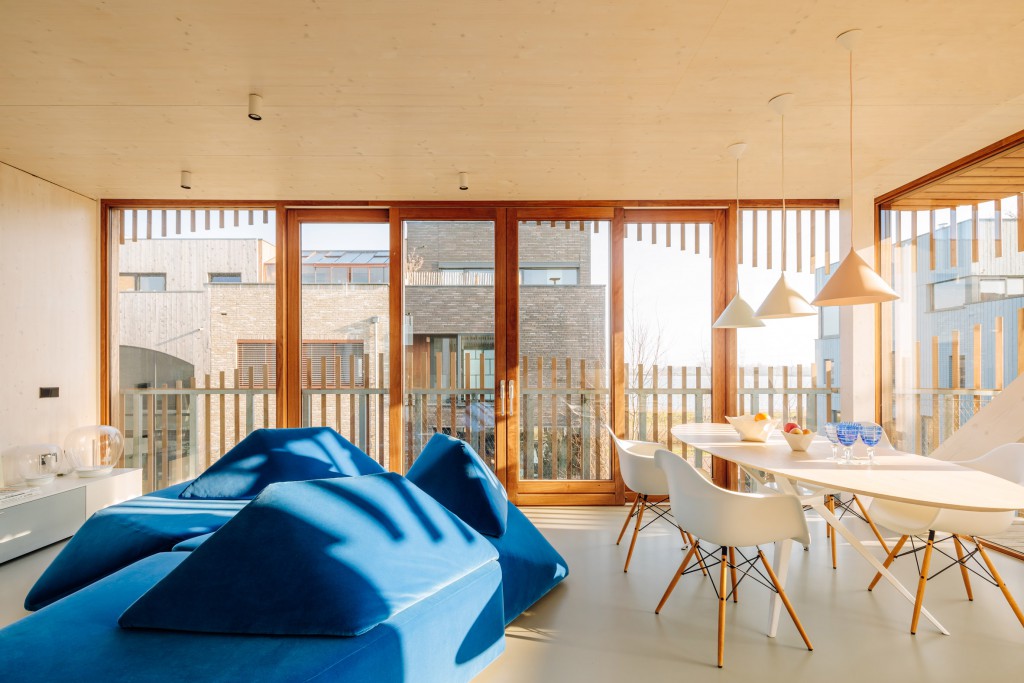
“The spaces are very fluid and organic, and ‘unfold’ as you move through the home,” said Garziano.
The layout includes ladder-like stairways between spaces and cut-outs in the pine-clad walls that give the interiors the feel of a ships cabin.
“這些空間非常流暢有機,當你穿過房屋時,’展開’,”加齊亞諾說。
佈局包括空間之間的階梯狀樓梯和松木覆蓋牆壁中的切口,使內部具有船艙的感覺。
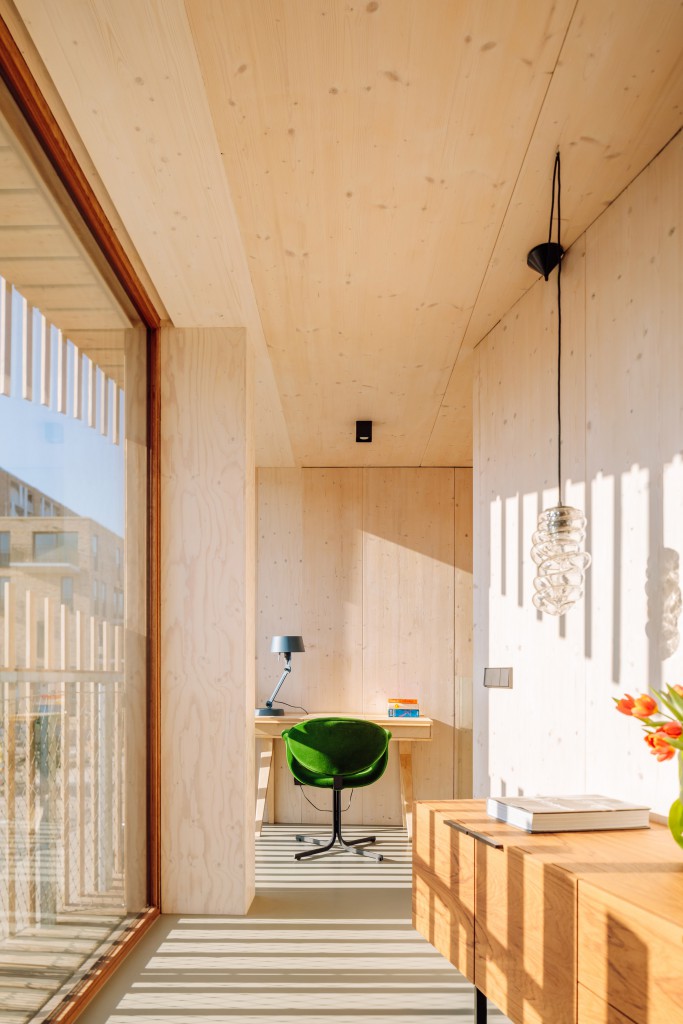
The name Freebooter is a Dutch word for pirates, and GG-loop chose it to show how it embraced both the principals of marine architecture and the adventuring spirit of sailors from history who lived beyond the law.
Zeeburgereiland, where the apartments are located, was underwater until the start of the 20th century, and used to be a docking place for ships.
Freebooter這個名字是海盜的荷蘭語,GG-loop選擇它來展示它如何接受海洋建築的原理和歷史上超越法律的歷史水手的冒險精神。
公寓所在的Zeeburgereiland水下直到20世紀初,曾經是船隻的停靠地點。
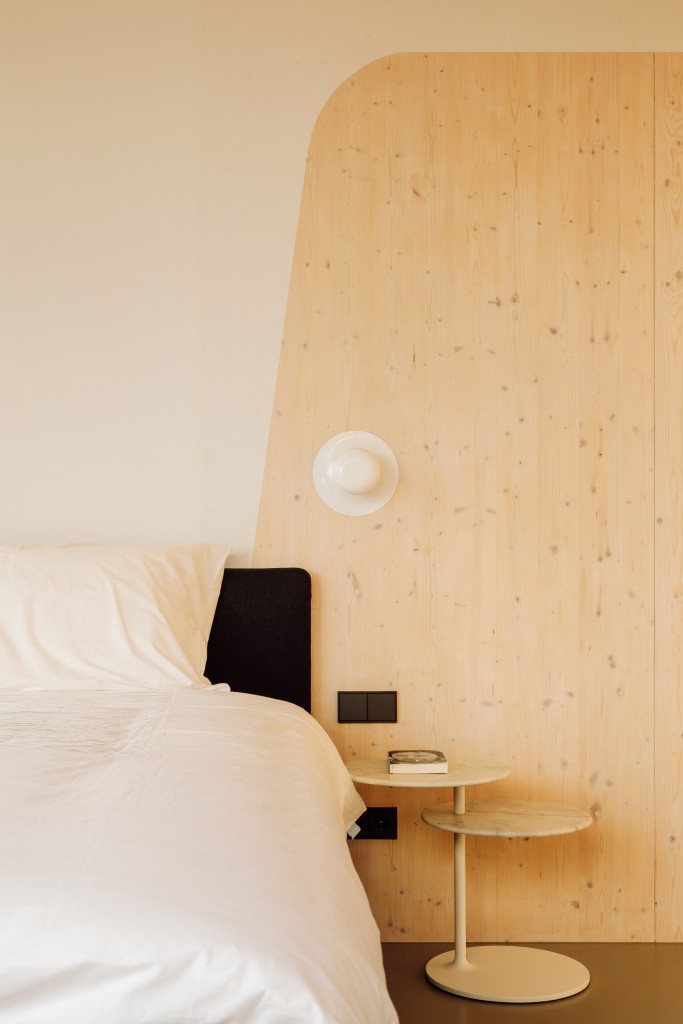
GG-loop wanted to connect the project with this context, using materials connected with shipbuilding such as red cedar, pine wood, steel and glass. Cedar, for example, is a popular choice for planking because the wood has natural properties that stop rot.
Other building designed according to biophilic principals include a family home in Brazil by Perkins+Will wrapped in a slatted timber screen, and retail giant Amazon’s headquarters in Seattle.
GG-loop希望將項目與這種背景聯繫起來,使用與造船相關的材料,如紅杉,松木,鋼和玻璃。 例如,雪松是木板的流行選擇,因為木材具有阻止腐爛的天然特性。
根據親生主義設計的其他建築包括巴西的家庭住宅,Perkins + Will包裹在板條木材屏幕中,以及零售巨頭亞馬遜在西雅圖的總部。
Development: Johan Beijers, Giacomo Garziano
Design team: Giacomo Garziano, Robbie Nijzen, Simone Peluso, Daniele Colombati, Jan-Willem Terlouw, Piergiorgio Angius, Luis Cascales, Krzysztof Zinger
Construction engineering: Pieters Bouwtechniek
Installations engineering: Mabutec
Main contractor: Kolthof
Timber construction: Binderholz, Ekoflin
Installations: JF Totaaltechniek
Kitchen and bathrooms: KCP Amsterdam, Peer Kolsters
Switches and systems: Jung
Floors and walls finishing: Senso
Meshes: Carl Stahl
Furniture supplier: Plaisier Interieur
發展:Johan Beijers,Giacomo Garziano
設計團隊:Giacomo Garziano,Robbie Nijzen,Simone Peluso,Daniele Colombati,Jan-Willem Terlouw,Piergiorgio Angius,Luis Cascales,Krzysztof Zinger
建築工程:Pieters Bouwtechniek
安裝工程:Mabutec
主承包商:Kolthof
木材結構:Binderholz,Ekoflin
裝置:JF Totaaltechniek
廚房和浴室:KCP Amsterdam,Peer Kolsters
開關和系統:榮格
地板和牆壁裝飾:Senso
網格:Carl Stahl
家具供應商:Plaisier Interieur
FROM:https://www.dezeen.com/2019/05/07/freebooter-gg-loop-amsterdam-apartment-architecture/

